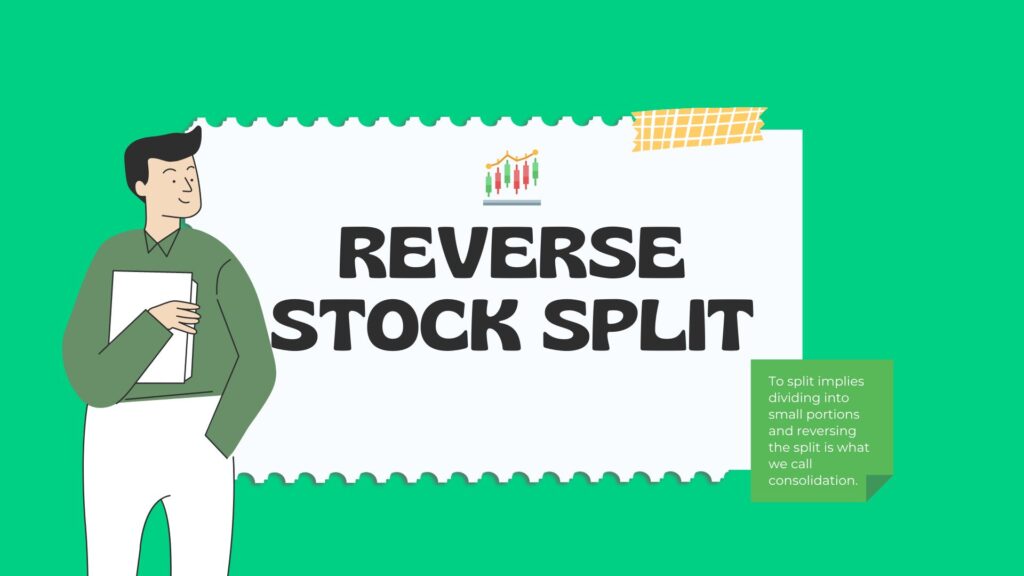What if a company’s share price reaches the record low level as per stock exchange’s listing requirements or the low share price doesn’t catch the eye of institutional investors? Well, here comes, Reverse stock split to the rescue of the corporates. Wondering what’s reverse stock split? In this article, we will summarize everything you need to know about reverse stock split & its impacts with examples.
What exactly is reverse stock split?
To split implies dividing into small portions and reversing the split is what we call consolidation. The corporate tool that consolidates large number of low priced existing shares of into fewer high priced shares is termed as reverse stock split or stock consolidation.
Example of reverse stock split
For company,
For instance, a FMCG company has 100000 shares of Rs. 5 each. As the share is priced low, the company may want to increase the price artificially for various reasons. The company thence announces a reverse stock split of 1-for-5.
| Before reverse stock split | After reverse stock split | ||||
| Total Shares held | Price per share | Total portfolio value | Total Shares held | Price per share | Total portfolio value |
| 20000 | Rs. 5 | Rs. 100000 | 4000 | Rs. 25 | Rs. 100000 |
- After reverse stock split the share price of the company rose to 25 and number of shares decreased to 20000.
- The value of shares outstanding remains the same at 500000.
For investor,
Say, if an investor holds 20000 shares of 5 each of this FMCG company, let’s analyze the impact on portfolio after reverse stock split of 1-for-5.
| Before reverse stock split | After reverse stock split | ||||
| Total Shares held | Price per share | Total portfolio value | Total Shares held | Price per share | Total portfolio value |
| 20000 | Rs. 5 | Rs. 100000 | 4000 | Rs. 25 | Rs. 100000 |
- After reverse stock split the share price of the company rose to 25 and number of shares held decreased to 4000.
- The value of portfolio remains constant at 100000.
Why reverse stock split? The Advantages
- Prevents delisting from stock exchange: many stock exchange have quote-minimum share price of stock. If the share price falls below that price, the shares of company will be delisted.
- Increase the price per share: It increases the price per share artificially and also floats spinoffs.
- Attracts institutional investors: Many institutional investors and mutual funds have minimum price cap requirement to invest in a stock. To maintain the price of company at such level, the company can look for reverse stock split.
The Impact of reverse stock split: The disadvantages
- Decreases liquidity: Since the number of shares gets reduced in market, it is a toll on liquidity.
- Negative sentiment: Reverse stock split gives negative sentiment to the market as it is believed that the management is trying to artificially raise the price.
Real life example: AMC entertainment holdings announced a reverse stock split of 1-for-10 on 22nd December, 2022. After which its share price plunged.






